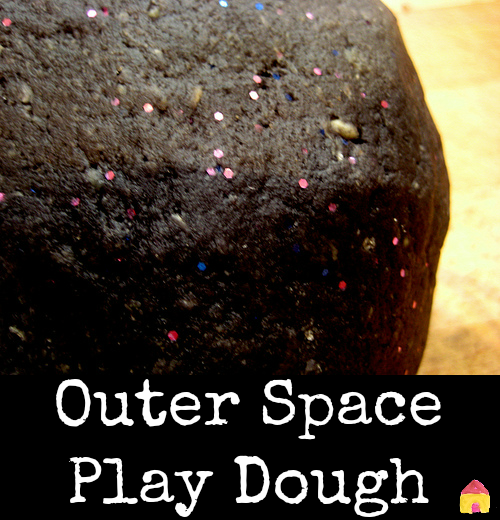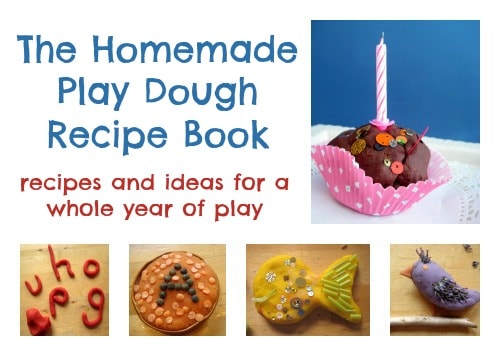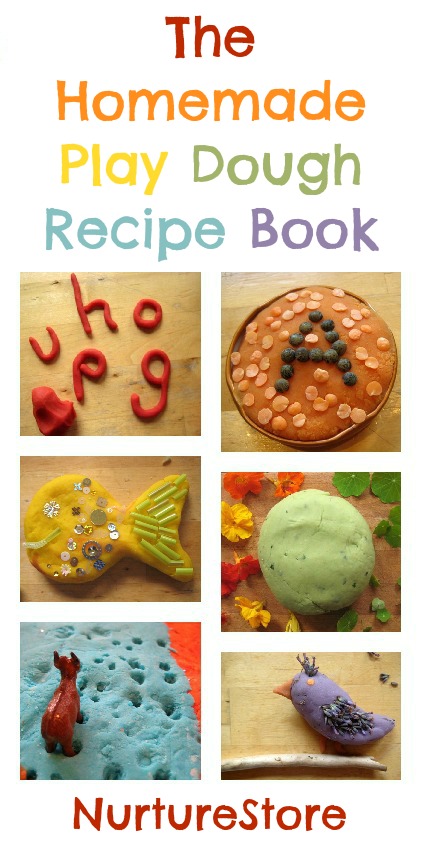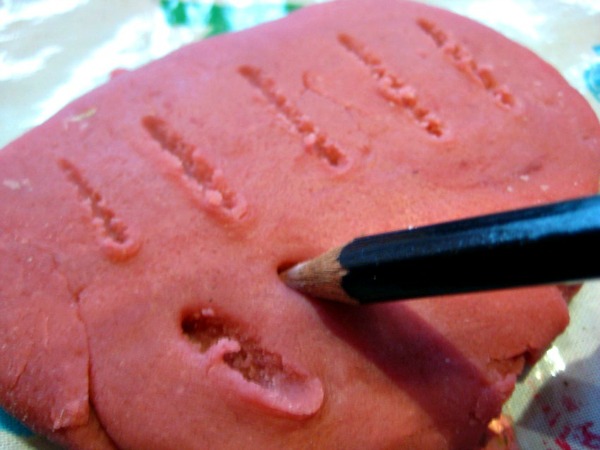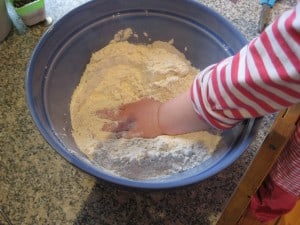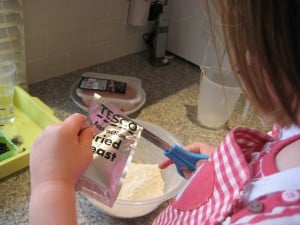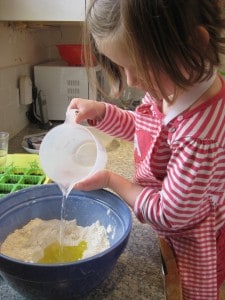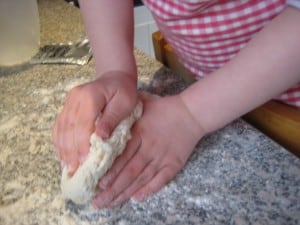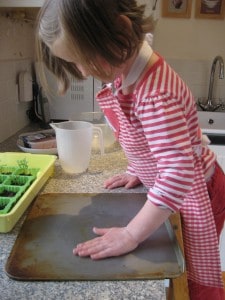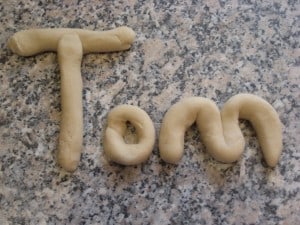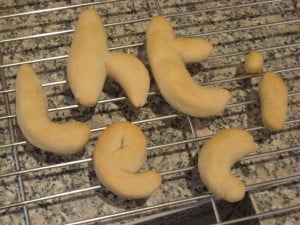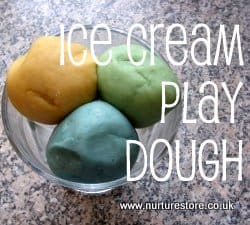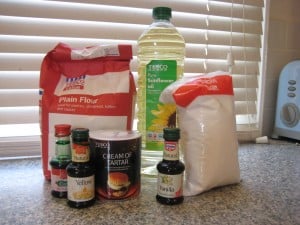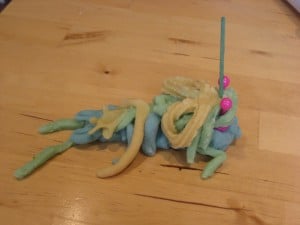Outer space play dough recipe for sensory play with space theme.
Play dough recipe
Need a play dough recipe? Salt dough recipe, bread dough recipe, no cook play dough recipe?
How about a year’s worth of playdough play ideas – including math, literacy and creative play.
Now available: an all-new-and-improved Homemade Play Dough Recipe Book!
come and take a look!
Mark making with play dough
Help your child learn pre-writing skills through mark making with play dough.
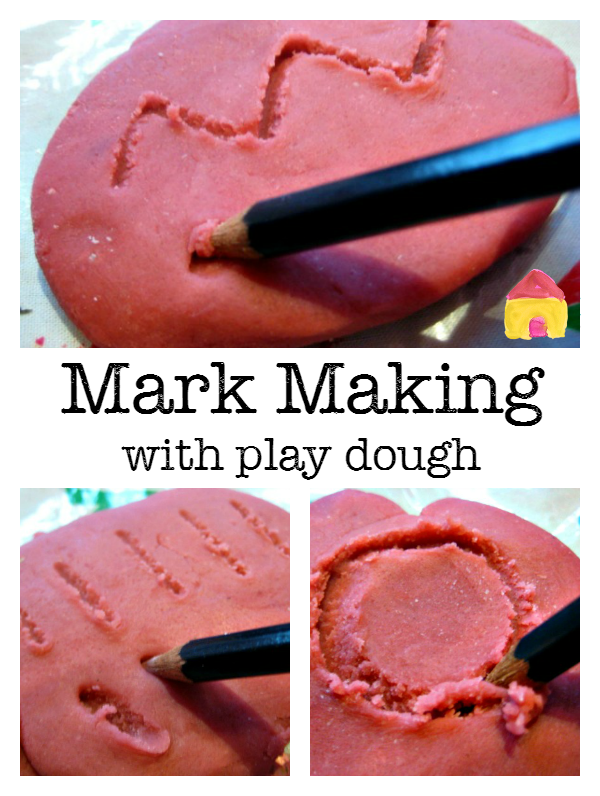
Mark making with play dough
We are huge fans of play dough in our house. We’ve just made a new batch using our favourite play dough recipe with some orange essence added to bring some smelly sensory fun.
I find play dough is a great activity for after school, especially if we have a mixed age group of children playing. It’s very relaxing as it has the lovely touchy-feely aspect of sensory play and there’s no right or wrong way to play with it – so however old you are (grandparents included!) you can enjoy it, without finding it frustrating or needing any grown-up interference.

Today I thought I’d mention how fabulous play dough is on the road to learning to write. While you might not associate dough with holding a pencil, all the kneading and shaping you do as you play is just right for building up fine motor skills – giving little fingers lots of practise in mobility, grasping and manipulating.
If your child is showing an interest it’s easy to extend the play by providing something to ‘write’ with, whether it’s a blunt pencil, stick, feather or other tool. By sitting alongside your child as they play you can model mark making, gently suggesting different patterns to try and seeing if they’d like to copy.
Try using a variety of marks which correspond to the shapes included when you eventually begin to write letter characters: horizontal and vertical lines, zigzags, circles, waves and loops.
You might find that children who are otherwise reluctant to ‘write’ do enjoy this kind of mark making. It’s a good option to introduce early writing skills to children who show little interest in pencils and paper.
Teach the alphabet with dough
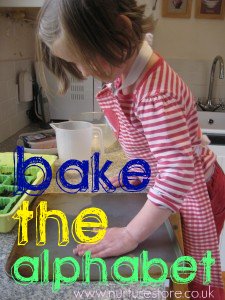
A simple bread dough is a perfect medium for children to explore with. It’s easy to make using ingredients you can keep in your storecupboard and I find children always take great pleasure in using ‘real grown-up’ materials. There are lots of ways you can use a bread dough to let your children play with counting, measuring, pouring, cutting. Today we’ve been teaching the alphabet with bread. We’ve a recipe and a song to share with you.
Weigh 500g of strong bread flour and a teaspoon of salt out into a big bowl. Little thought it felt very tickly.
Pour in 300ml of warm water and a tablespoon of olive oil using good hand-eye co-ordination. Little liked mixing the colours to combine all the ingredients into a ball of dough.
Develop strength in your fingers by kneading the dough for 5 minutes on a floured surface. (Getting fingers ready to one day hold a pencil and write well.)
Introduce some letters by making your own dough alphabet. (If you want to use the recipe to make a proper loaf you can shape it and then leave it to prove for 45 minutes before baking.)
Vanilla-scented ice cream playdough
Here’s a recipe for homemade vanilla-scented playdough in pretty ice-cream shades – together with some play ideas to encourage your kids to explore and learn.
Playdough is such a wonderful material for chidren to explore as there are so many ways for them to play with it. It’s an open-ended activity so it allows them to use their imagination and be creative with what they make. It’s very good when there’s a mixed age group of children playing as they can all join in a way that suits their age and interests. It promotes language development too if you’re sat chatting about what you’re making or co-operating over sharing materials.
You can add in other resources from time to time to spark ideas for new ways to play – maybe provide some matchsticks, lollypop sticks, cake cases, bottletops or feathers. You can also use a change of location to extend the play possibilities. It’s not a very messy substance, and cleans up fairly easily if you don’t leave it to harden. (Best on hard surfaces rather than carpet though.) It would be interesting to watch how your children use playdough in the garden, in the toy kitchen or in the dolls house.
I’ve been using this family recipe to make playdough for a while but a recent post by Jen over at the The Mad House suggested using essential oils in the mixture to add scent. I loved this idea but as I wasn’t completely sure the children playing here would keep the dough out of their mouths I’ve used vanilla essence here instead. The addition of natural food colourings produces lovely ice cream-like shades which I much prefer to the lurid shop bought colours. I also like the texture of homemade playdough and it’s so cheap and easy to make. Give it a try and I think you’ll be making your own from now on.
Here’s the recipe – using a measuring jug instead of weighing scales to make it easy.
Warm 750ml of water in a large pan. Add 375 ml of salt, 750ml of flour, 45ml of sunflower oil, 30ml of cream of tartar and 10ml of vanilla essence.
Stir the ingredients together over a low heat. Use a whisk at first to get rid of any lumps and then a wooden spoon until the dough comes together.
Remove the pan from the heat and tip the dough into a large bowl. (If you want to make several different colours you can split the dough into separate bowls at this stage and add a different colour to each bowl. )
Add a few drops of food colouring and knead for a couple of minutes until the colour is evenly spread through the dough.
Let it cool a little and then it’s ready to play with. Store in an air-tight jar and it should last for at least a couple of months.
More playdough recipes
How about a chocolate playdough recipe? Valentine’s playdough? Outer space playdough?
- « Previous Page
- 1
- …
- 13
- 14
- 15


